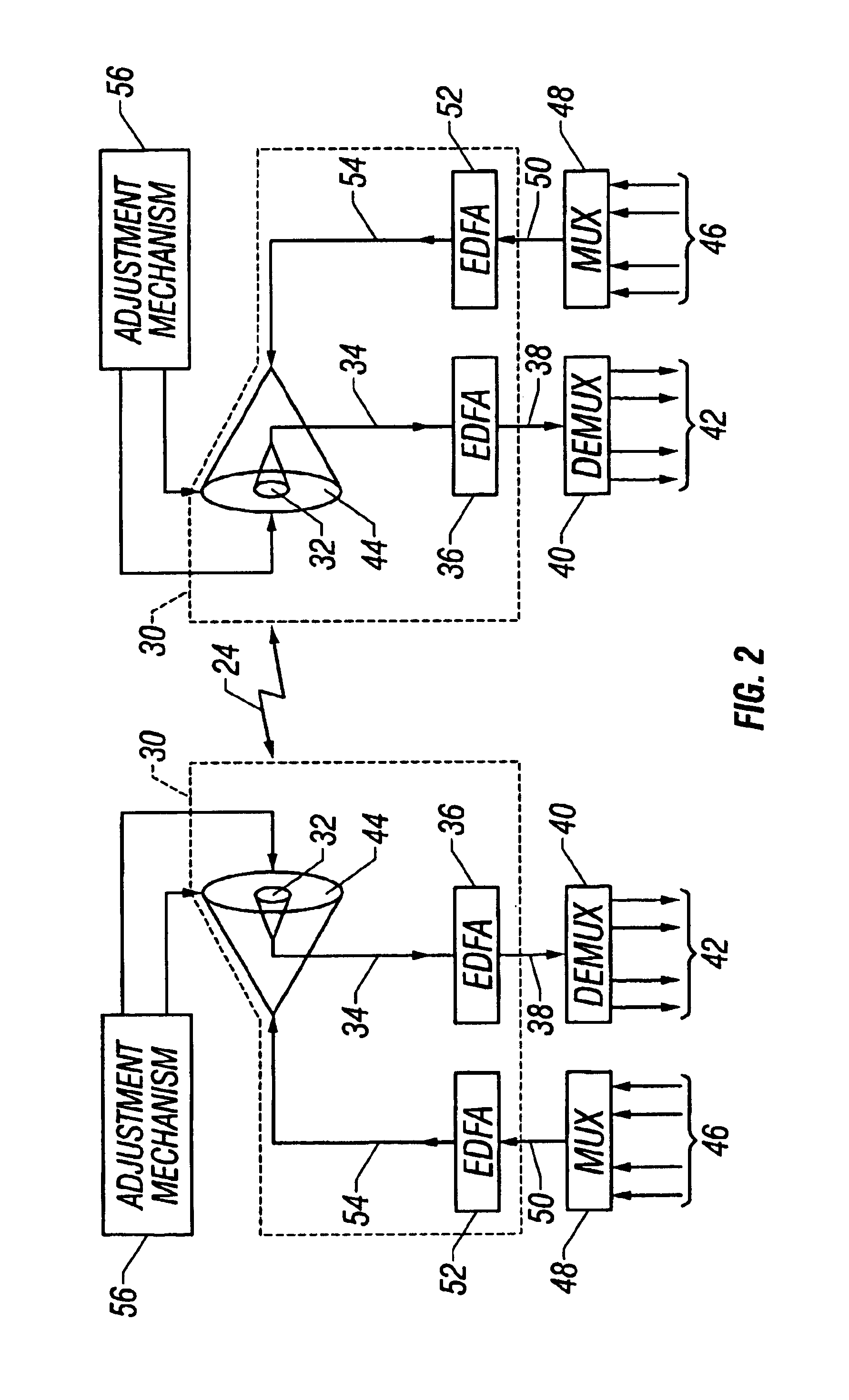Terrestrial optical communication network of integrated fiber and free-space links which requires no electro-optical conversion between links
a technology of optical communication network and free space link, which is applied in the field of terrestrial optical communication, can solve the problems of difficult or impossible signal recognition, the physical length or distance over which information can travel, and the use of wired media in telecommunications and high-speed data communication
- Summary
- Abstract
- Description
- Claims
- Application Information
AI Technical Summary
Benefits of technology
Problems solved by technology
Method used
Image
Examples
Embodiment Construction
ram of portions of two link head stations with optical transceivers located at opposite ends of a free-space link of the network shown in FIG. 1, which accomplish another type of adaptive power control of the optical signal communicated therebetween.
[0031]FIG. 12 is a front elevational view of a transceiver with a position adjustment mechanism employed in the network shown in FIG. 1.
[0032]FIG. 13 is a section view taken substantially in the plane of line 13—13 of FIG. 12.
[0033]FIG. 14 is a section view taken substantially in the plane of line 14—14 of FIG. 12.
[0034]FIG. 15 is a block diagram illustrating another pair of free-space optical transceivers made in accordance with an embodiment of the present invention.
[0035]FIG. 16 is a block diagram illustrating an exemplary version of a receive portion RX of one of the transceivers shown in FIG. 15 in accordance with an embodiment of the present invention.
[0036]FIGS. 17 and 18 are block diagrams illustrating the receive portion RX show...
PUM
 Login to View More
Login to View More Abstract
Description
Claims
Application Information
 Login to View More
Login to View More - R&D
- Intellectual Property
- Life Sciences
- Materials
- Tech Scout
- Unparalleled Data Quality
- Higher Quality Content
- 60% Fewer Hallucinations
Browse by: Latest US Patents, China's latest patents, Technical Efficacy Thesaurus, Application Domain, Technology Topic, Popular Technical Reports.
© 2025 PatSnap. All rights reserved.Legal|Privacy policy|Modern Slavery Act Transparency Statement|Sitemap|About US| Contact US: help@patsnap.com



